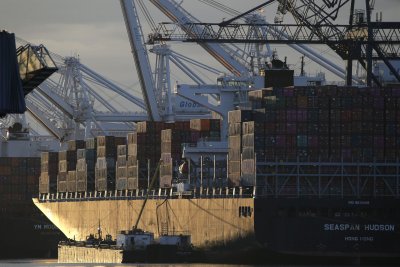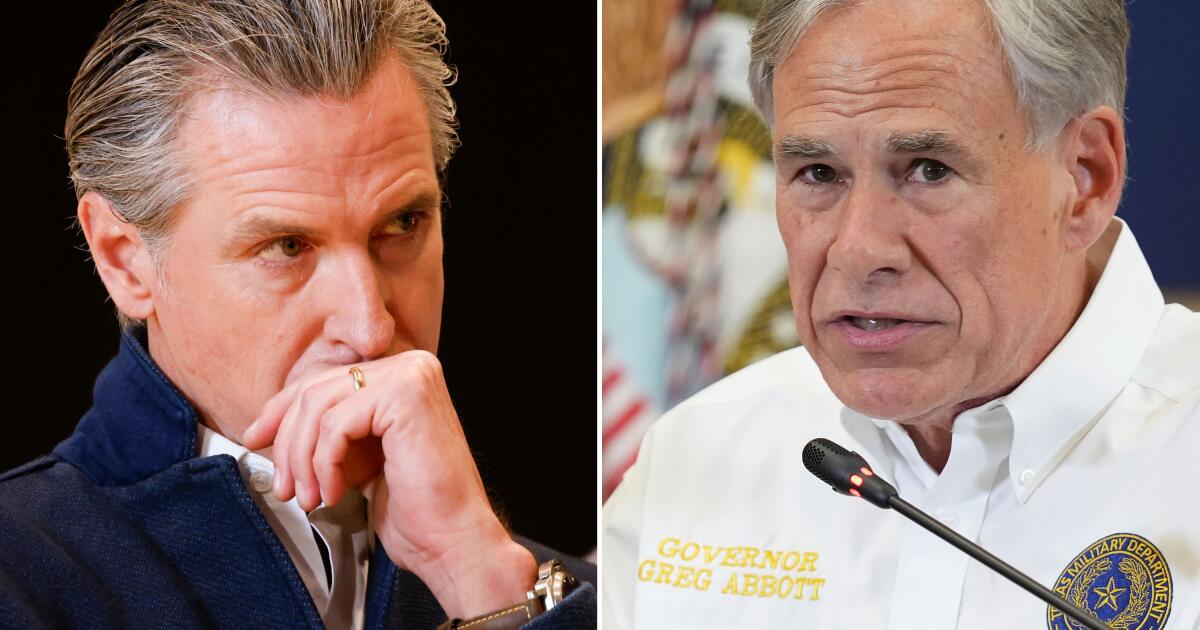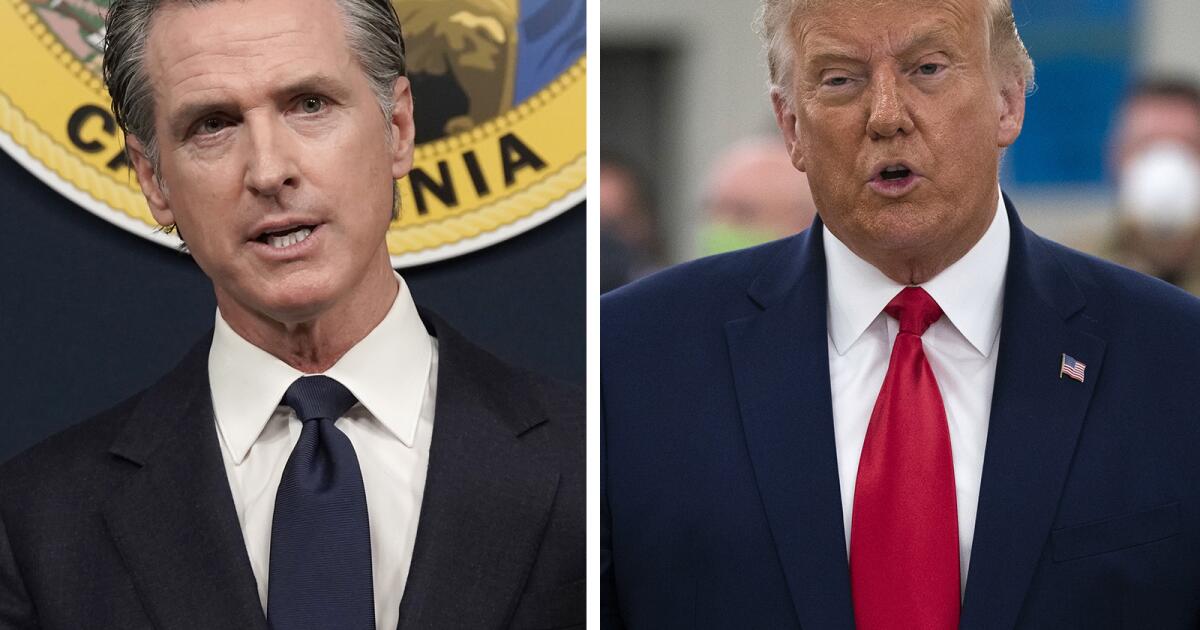From Jack Harris: If the Dodgers are going to win 13 games in October, they will likely have to master the playbook they ran Wednesday night.
Starting pitchers came out of the bullpen. Another late-inning collapse didn’t cripple their psyche. The offense delivered timely hits when it needed to. And the team grinded out a 5-4 extra-innings win over the Arizona Diamondbacks.
The story of the night, in an unexpected but entirely warranted late-season plot twist, was Roki Sasaki and Clayton Kershaw throwing scoreless innings of relief for a beleaguered Dodgers bullpen.
The theme, however, was improvisation with the roster and resiliency in the dugout, moving the team within a win of another National League West division championship.
“I know the word resilience gets thrown out a lot, but it was a resilient win and a resilient group,” manager Dave Roberts said. “We fought our tails off until the end. It didn’t look good at different points of the game. But Arizona fought as well. So it was a heck of a ball game … Really good stuff.”
Continue reading here
Dodgers bullpen remains a mess. Can Roki Sasaki’s return provide trustworthy relief?
How Bill Russell stayed connected to baseball, and reconnected with the Dodgers
Dodgers box score
MLB standings
ANGELS
Taylor Ward homered, Kenley Jansen earned his 475th career save and the Angels beat the Kansas City Royals 3-2 on Wednesday night to avoid a series sweep.
Only four pitchers have at least 475 saves: Jansen, Mariano Rivera (652), Trevor Hoffman (601) and Lee Smith (478).
Yusei Kikuchi (7-11) gave up just one hit while striking out six over five innings. He was removed with a left forearm cramp before the sixth. Jansen struck out two in the ninth for his 28th save of the season.
Continue reading here
Despite rough season, Angels’ Mike Trout still believes he can recapture his MVP form
Angels box score
MLB standings
RAMS
From Gary Klein: No reset necessary. No reason to make more of some rare misfires.
After 16-plus seasons, Rams quarterback Matthew Stafford knows how to put less-than-efficient performances behind.
So the passes he missed in last Sunday’s defeat by the Philadelphia Eagles are not cause for concern as he prepares for Sunday’s game against the unbeaten Indianapolis Colts at SoFi Stadium.
“It happens,” Stafford said Wednesday before practice. “I’m not too worried about it.”
Stafford completed 19 of 33 passes (57.6%) for 198 yards and two touchdowns with an interception. Despite missing on some passes he usually completes, he finished the game by directing a two-minute drive that positioned the Rams to win the game. The Eagles blocked a last-second field-goal attempt and returned it for a touchdown.
Continue reading here
UCLA UNLOCKED
Sign up for UCLA Unlocked, our new weekly newsletter featuring all things Bruins athletics. Ben Bolch, in his 10th season covering UCLA football and men’s basketball for The Times, will be your host. To sign up to get this newsletter delivered every Monday to your inbox, click here.
UCLA POLL
Almost every week in UCLA Unlocked, there is a poll for readers to give their opinion on UCLA athletics. This week’s poll:
Who would you rather have as UCLA’s next football coach?
An exciting lower-level coach such as Tulane’s Jon Sumrall?
A rising star such as Oregon offensive coordinator Will Stein?
An existing Power Four coach such as Arizona’s Jedd Fisch?
A wild card such as Mississippi’s Lane Kiffin?
Click here to vote in our survey.
From Ryan Kartje: Walker Lyons took his place in the slot and looked right. Lake McRee crouched on the opposite wing and looked left. The two Trojan tight ends had spent all last Saturday night moving around USC’s formations — split out wide, in the backfield, on the line of scrimmage — paving rush lanes and creating mismatches wherever they went.
Now it was third and short, early in the third quarter of USC’s win over Michigan State, and the two of them were on the field together again, forcing the Spartan defense to decide in a hurry just how Lincoln Riley planned to deploy them.
That unpredictability was precisely the point of the position. It’s why the tight end has been a critical tenet of his Riley’s offense since he started as Oklahoma’s offensive coordinator in 2015. No other position, Riley has come to believe, adds more versatility to an offense.
Continue reading here
TIMES OF TROY
Times of Troy is our weekly newsletter featuring all things Trojans athletics. Ryan Kartje, who covers USC football and men’s basketball for The Times, is your host. To sign up to get this newsletter delivered every Monday to your inbox, click here.
SPARKS
The Sparks announced they are joining the WNBA’s facilities upgrade boom, building a $150-million, 55,000-square-foot training and practice facility in El Segundo that is set to open ahead of the 2027 season.
The venue will include two WNBA regulation basketball courts along with a locker room, weight room and athletic training space. The team states the facility will also feature an outdoor spa, indoor hydrotherapy suites, dedicated nap rooms, wellness spaces for yoga or mediation, and extensive use of natural light and retractable doors.
“We’re building a place where Sparks players can be at their best on and off the court,” said Eric Holoman, Sparks managing partner and governor. “From cutting-edge training and recovery spaces to family and community areas, every corner of this facility was designed with them at the center.”
Continue reading here
DODGERS DUGOUT
Dodgers Dugout is our award-winning Dodgers newsletter. Current news, historical items, polls, top 10 lists, you name it, if it’s about the Dodgers it is covered here. Houston Mitchell is your host. You can sign up by clicking here.
PREP RALLY
Want one place to get all your high school sports news? Our Prep Rally newsletter is what you need. Twice a week, we’ll deliver all the scores, news and features you crave, straight from our award-winning high school sports columnist, Eric Sondheimer. You can sign up for Prep Rally here.
THIS DAY IN SPORTS HISTORY
1866 — Jerome Park, named for its founder Leonard Jerome, opens in the Bronx in New York. Jerome, seeking to emulate the British racing system, also establishes the American Jockey Club, precursor to the present Jockey Club, formed in 1894.
1920 — Molly Bjurstedt Mallory wins her fifth title in six years with a two-set victory over Marion Zinderstein in the U.S. Lawn Tennis Association championships.
1926 — Walter Hagen wins his third straight and fourth overall PGA Championship. Hagen beats Leo Diegel 4 and 3 in the championship match at Salisbury Golf Links in Westbury, N.Y.
1949 — Louise Suggs wins the U.S. Women’s Open by 14 strokes over Babe Didrikson Zaharias.
1962 — Sonny Liston knocks out Floyd Patterson at 2:06 of the first round at Comiskey Park in Chicago to win the world heavyweight title.
1966 — Gloria Ehret wins the LPGA Championship by three strokes over four-time champion Mickey Wright.
1982 — Ricky Edwards rushes for 177 yards and four touchdowns to help Northwestern end its 34-game losing streak in a 31-6 victory over Northern Illinois.
1988 — Americans sweep the medals in the long jump at the Seoul Olympics; Carl Lewis wins his second gold of the Games with leap of 8.72m ahead of teammates Mike Powell and Larry Myricks.
1988 — Swimmer Matt Biondi wins his 5th gold medal of the Seoul Olympics anchoring the victorious American 4 x 100m medley relay team.
1994 — Oliver McCall scores a major upset by stopping Lennox Lewis 31 seconds into the second round to capture the WBC heavyweight title in London.
1995 — Jerry Rice has 181 yards receiving in San Francisco’s 27-24 loss to Detroit. It’s his 51st 100-yard game, which breaks Don Maynard’s NFL record.
1997 — WNBA announces it will add Detroit & Washington, D.C. franchises.
2000 — American basketball player Vince Carter jumps over 7 foot 2 Frédéric Weis in 2000 Summer Olympics, known in France as “le dunk de la mort” (the dunk of death).
2004 — Bobby Seck of Hofstra throws eight touchdown passes to tie an Atlantic 10 mark and set a school record in the Pride’s 62-43 victory over Rhode Island.
2005 — Fernando Alonso becomes Formula One’s youngest champion by finishing third in the Brazilian Grand Prix. Alonso, 24, a six-time winner in his third full season in Formula One, ends Michael Schumacher’s five-year hold on the title.
2010 — Collingwood and St. Kilda plays to a 68-68 tie, the first in an Australian Rules football grand final since 1977, setting up a rematch to decide the league title.
2011 — The Detroit Lions snap a 13-game losing streak with a 26-23 victory over the Minnesota Vikings. The Lions, who won in the Metrodome for the first time since 1997, are 3-0 for the first time since 1980.
2013 — Skipper Jimmy Spithill and Oracle Team USA win the America’s Cup with one of the greatest comebacks in sports history to keep the oldest trophy in international sports in the United States. Spithill steers Oracle’s space-age, 72-foot catamaran to its eighth straight victory, speeding past Dean Barker and Emirates Team New Zealand in the winner-take-all Race 19 on San Francisco Bay. All but defeated a week ago, the 34-year-old Australian and his international crew twice rallies from seven-point deficits to win 9-8.
2016 — Rory McIlroy rallies to enter a three-man playoff and win the FedEx Cup. After trailing by three shots with three holes to play in the Tour Championship, McIlroy holes a 15-foot birdie putt on the fourth extra hole to win the playoff and claim the $10 million FedEx Cup bonus.
2022 — Laver Cup Men’s Tennis, London: Team World sweeps final day for 13-8 victory over Team Europe; tournament marks retirement of Roger Federer.
THIS DAY IN BASEBALL HISTORY
1941 — Pete Reiser’s homer and Whitlow Wyatt’s five-hitter helped Brooklyn beat the Boston Braves 6-0 and clinch the Dodgers’ first pennant in 21 years.
1955 — Detroit’s Al Kaline, at the age of 20, became the youngest player to win a batting title, finishing his second season with a .340 average. Ty Cobb was one day older when he won the crown, batting .350 in 1907, also playing for Detroit.
1956 — Sal Maglie of the Brooklyn Dodgers pitched a 5-0 no-hitter against the Philadelphia Phillies.
1960 — The New York Yankees clinched manager Casey Stengel’s 10th and last American League pennant with a 4-3 victory over Boston.
1965 — Satchel Paige, at 59, became the oldest player in the majors, taking the mound for Kansas City and pitching three scoreless innings over the Boston Red Sox. He gave up one hit, to Carl Yastrzemski.
1965 — Willie Mays, who hit 51 home runs in 1955, joined Ralph Kiner as only the National Leaguers to have more than one 50-home run season.
1974 — Dr. Frank Jobe transplanted a tendon from Tommy John’s right wrist to the Dodger pitcher’s left elbow. The revolutionary ulnar collateral ligament reconstruction allowed John to win an additional 164 games, more than half of his career total of 288 victories.
1980 — Oakland’s Brian Kingman lost his 20th game when the A’s were defeated by the Chicago White Sox 6-4. Kingman was the first pitcher to lose 20 games with a winning team since Dolf Luque went 13-23 for the 1922 Cincinnati Reds.
1984 — Rusty Staub of the Mets became the second player to hit homers as a teenager and past his 40th birthday. Staub’s game-winning home run off Larry Andersen to give the Mets a 6-4 victory over Philadelphia at Shea Stadium. Ty Cobb was the other major leaguer to accomplish the feat.
1987 — San Diego’s Benito Santiago set a modern major league record for rookies by hitting safely in his 27th consecutive game in a 5-3 loss to the Dodgers.
1998 — The New York Yankees set the AL record for wins with their 112th, beating Tampa Bay 6-1 to break the victory mark held by the 1954 Cleveland Indians.
2001 — Richie Sexson and Jeromy Burnitz became the first teammates to hit three home runs apiece in a game as Milwaukee defeated Arizona 9-4.
2003 — Toronto’s Carlos Delgado became the sixth player to homer in four straight at-bats in one game as the Blue Jays beat the Tampa Bay Devil Rays 10-8 at SkyDome. Delgado tied the score at 8-8 in the eighth with his fourth homer, a solo shot off Lance Carter.
2007 — Prince Fielder, at 23 years, 139 days old, became the youngest major league player to hit 50 home runs in a season, connecting twice in Milwaukee’s 9-1 rout of St. Louis.
2013 — The New York Yankees failed to make the playoffs for only the second time in 19 years, getting mathematically eliminated during their 8-3 loss to Tampa Bay.
2016 — Jose Fernandez, 24, ace right-hander for the Miami Marlins, was killed in a boating accident.
2017 — Aaron Judge broke Mark McGwire’s major league record for home runs by a rookie, hitting a pair for the second straight day to raise his total to 50 and lead the New York Yankees over the Kansas City Royals 11-3.
2018 — Max Scherzer became the 17th pitcher since 1900 to strike out 300 batters in a season, reaching that milestone by fanning 10 in seven innings during Washington’s 9-4 win over Miami.
Compiled by the Associated Press
Until next time…
That concludes today’s newsletter. If you have any feedback, ideas for improvement or things you’d like to see, email me at [email protected]. To get this newsletter in your inbox, click here.


















